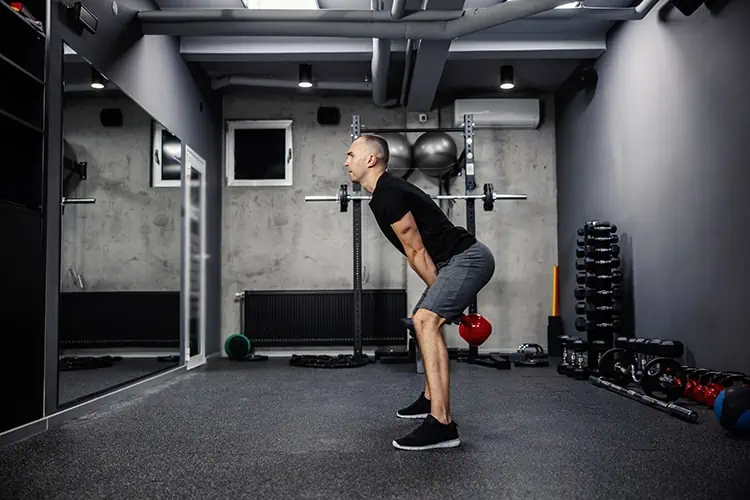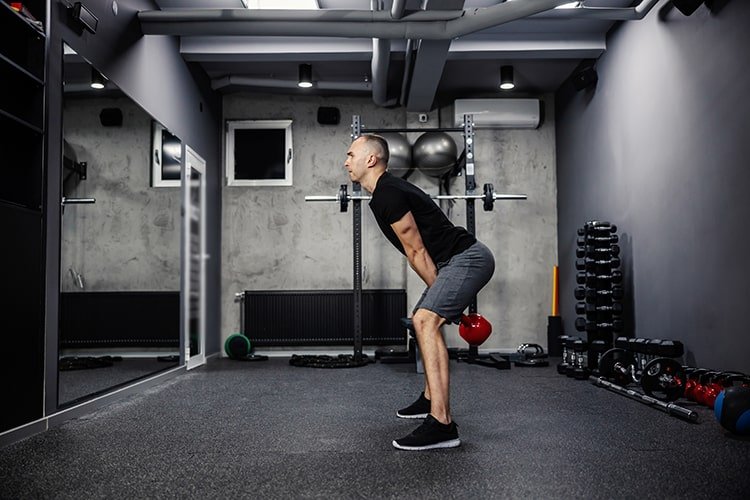
Kettlebell workouts have gained immense popularity over the years for their ability to provide a full body workout that combines strength training with cardiovascular endurance. For beginners, starting a kettlebell training routine can seem intimidating, but it’s an incredibly effective way to build muscle, improve flexibility, and boost your overall fitness level. This beginner’s guide to kettlebell training exercises will walk you through a simple yet comprehensive plan to start your fitness journey.
A fitness journey with Kettlebells A workout program for beginners
Before diving into the exercises, it’s important to understand what makes kettlebells unique. Kettlebells are cast iron or cast iron balls with a handle attached to the top. They come in a variety of sizes and weights, making them versatile for a wide range of exercises. The unique shape of the kettlebell allows for off-center weight distribution, which challenges your body in ways that traditional dumbbells cannot.
Getting started
Choosing the right Kettlebell
For beginners, choosing the right kettlebell weight is crucial. A general rule of thumb is to start with a weight you can comfortably lift for 8-10 reps. Typically, this is about 8 kg (18 lb) for women and 16 kg (35 lb) for men. However, everyone’s strength levels are different, so adjust as needed.
Kettlebell warm-up workout routine
Always start your workout with a warm-up to prepare your muscles and avoid injury. Spend 5-10 minutes doing dynamic stretching and light cardio, such as jumping jacks or high knees, to get your heart rate up.
The Beginner Kettlebell Workout Plan
This training program is designed to be completed three times per week, with one day of rest between each training day.
Training structure
Each training session will include a combination of compound and isolation exercises to work different muscle groups. Perform each exercise for 3 sets of 8-12 repetitions, resting 30-60 seconds between sets.
Day 1: Focus on the whole body
Kettlebell swings
The kettlebell swing workout is a fundamental exercise that targets your glutes, hamstrings, core and shoulders. Start by standing with your feet shoulder-width apart, holding the kettlebell with both hands. Bend your knees slightly, hinge at your hips to swing the kettlebell between your legs, then push your hips forward to swing the kettlebell up to chest height. Let the momentum bring it back between your legs and repeat.
Goblet Squats Kettlebell Workout Plan
Hold the kettlebell close to your chest with both hands. With your feet slightly wider than shoulder-width apart, squat down, keeping your chest and back straight. Push through your heels to return to the starting position.
Day 2: Upper Body and Core
Kettlebell type
Start with the kettlebell in the rack position (held over your shoulder, with the bell resting on the back of your wrist and forearm). Press the kettlebell straight up until your arm is fully extended, then lower it back to the starting position. Perform the exercise on both sides.
Kettlebell Row Workout Program
Bend forward at the hips, holding the kettlebell in one hand with the arm extended. Pull the kettlebell up, keeping your elbow close to your body, then lower it back down. Repeat on both sides.
Day 3: Lower Body and Stability
Kettlebell Lunges Workout Program
Hold a kettlebell in the rack position at your chest or side. Step forward, making sure your front knee doesn’t go past your toes. Push off your front leg to return to the starting position. Repeat on both sides.
Turkish Rising
This complex movement works your entire body, focusing on core strength and stability. Start by lying on your back, holding the kettlebell in one hand with the arm fully extended above you. Gradually sit up and then lower to a standing position, always keeping the kettlebell overhead. Reverse the movement to return to the starting position. Perform the exercise slowly and with control.
Chilling
End each workout with a cooldown to help your muscles recover. Spend 5-10 minutes doing static stretches, focusing on areas that feel particularly tight.
Kettlebell Training Tips and Safety Issues
When starting out with kettlebells, it’s important to focus on form to avoid injury. Consider working with a certified trainer first to make sure you’re performing the exercises correctly. Additionally, listen to your body and adjust the weight or number of repetitions as needed. Progress gradually to avoid overtraining and injury.
Optimizing Your Kettlebell Training Program
Progressive overload
In order to continue to make progress, it is important to apply the principle of progressive overload. This means gradually increasing the weight of the kettlebell, the number of repetitions or the intensity of your workouts over time. For example, once you can comfortably complete 12 repetitions of an exercise, consider increasing the weight of the kettlebell for that exercise during your next workout.
Variability in Kettlebell Training Program
Introducing variety into your workouts can prevent plateaus and keep your workouts engaging. Experiment with a different kettlebell exercise program, adjust the number of sets and repetitions, or modify the order of the exercises in your routine. This not only challenges your body in new ways, but also keeps your motivation high.
Focus on Recovery
Recovery is just as important as the workouts themselves. Make sure you give your body enough time to rest and recover by taking your rest days seriously and looking into practices like stretching, foam rolling and maybe even yoga to improve flexibility and reduce muscle soreness.
Common mistakes to avoid
Form with a view
One of the most common mistakes beginners make is neglecting proper form to lift heavier weights or do more reps. Poor form not only reduces the effectiveness of exercise but also significantly increases the risk of injury. Always prioritize technique control with lighter weights before moving on.
Omission of warm-up and cool-down
Neglecting the warm-up and cool-down phases can lead to muscle strains and other injuries. A proper warm-up prepares your muscles and cardiovascular system for training, while a cool-down helps to gradually lower your heart rate and start the recovery process.
Ignoring the basic commitment
Many kettlebell workout plan exercises require strong core engagement to perform properly. Failure to engage your core can lead to improper form and reduced workout effectiveness. Focus on keeping your core tight, especially during exercises like swings, squats and lunges.
Nutritional advice to support your fitness goals
Stay hydrated
Hydration is crucial for optimal performance during workouts and recovery afterward. Water helps transport nutrients to your muscles and keeps your joints lubricated. Aim to drink at least 8 glasses of water a day and more on training days.
Focus on Whole Foods
Your body needs quality fuel to perform at its best. Focus on a balanced diet rich in whole foods, including lean proteins, whole grains, healthy fats, fruits and vegetables. These foods provide the nutrients your body needs to build muscle, recover from workouts, and maintain energy levels.
Timing your meals
The timing of your meals can also play a role in your workout performance and recovery. Eating a meal or snack rich in protein and carbohydrates before your workout can give you the energy you need. After traininga similar snack can help repair and build muscle tissue.
Staying motivated
Finally, staying motivated can be a challenge, especially for beginners. Set realistic goals, track your progress and celebrate your achievements, no matter how small. Consider joining a community of kettlebell enthusiasts, either in person or online, to share tips, progress, and encouragement.
Kettlebell training offers a dynamic and effective way to improve your fitness. This beginner plan provides a solid foundation for those new to kettlebell training, covering the basics while still providing a challenge. Remember, consistency is key, so stick to your workout plan, focus on proper form, and gradually increase the intensity as you become more comfortable. With dedication and effort, you will soon experience the many benefits that kettlebell training has to offer.
